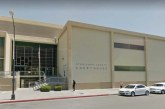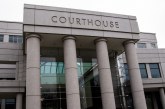 Two years ago, in January 2011, the Third District Court of Appeals threw out the conviction of Kyle Vigil, who received a 15-year to life sentence for his role in a drive-by shooting in Woodland, after being acquitted of the first shooting, but convicted of aiding in the subsequent drive-by gunfire with gang enhancements.
Two years ago, in January 2011, the Third District Court of Appeals threw out the conviction of Kyle Vigil, who received a 15-year to life sentence for his role in a drive-by shooting in Woodland, after being acquitted of the first shooting, but convicted of aiding in the subsequent drive-by gunfire with gang enhancements.
Citing jury misconduct in the form of a home experiment conducted by a juror on a crucial piece of evidence, the court overturned that conviction based on events that occurred in June of 2007 when Kyle Vigil was just 17.
The ruling by the appellate court sent Mr. Vigil back to Yolo County where the District Attorney’s office immediately refiled the case. For the past two years, the sides have attempted to reach some sort of settlement, and last month Mr. Vigil agreed to take a determinate 12-year prison sentence.
Mr. Vigil, who was facing both charges in the original trial, never received an offer for less than a life sentence. However, with the acquittal on the first charge and the overturn, he gets a second chance.
Under state law, Mr. Vigil must serve 85% of the time he is sentenced to; with his time served, however, Mr. Vigil can be released in just over four years. Had the 15-year to life sentence remained, Mr. Vigil, with his gang conviction, would likely have served 30 to 40 years. Now he can be out when he’s 28, giving him an opportunity to have a normal life if he can turn things around.
The DA’s office argued that in June of 2007, Mr. Vigil drove Joshua Latham to a home on Donnelly Circle in Woodland, an area noted for its gang activity. Mr. Latham would exit the vehicle and fire five or six shots into a home.
Mr. Latham, after returning to the vehicle, opened fire in a neighborhood near the Bel Air out of the open passenger window. Writes the court, “On this occasion, Latham was shooting ‘at the house.’ At the time of the shooting, the car was traveling about five to 10 miles per hour.”
The court reversed the verdict on Mr. Vigil but kept the conviction against the shooter, Joshua Latham, in the case for whom they found “no reversible error.”
Writes the appeals court, “This case involves one of the most egregious types of juror misconduct. During deliberations, a juror performed an experiment at his home under conditions not subject to judicial oversight or cross-examination.”
“He later reported the result, which was unfavorable to defendant, to his fellow jurors, who were struggling over a crucial issue in the case,” they write.
According to the court record, Jeff Raven, defense attorney for Mr. Vigil, asked Juror No.2 why, if the jury acquitted his client of the first count, they found him guilty on the second count.
As the court writes, “In other words, if the jurors found Vigil did not know that Latham was going to do the first shooting, “why would you impart [sic] knowledge to him on the second shooting?”
The juror responded, “Mr. Raven, do you know how difficult it is to raise a rifle out of the window from the passenger seat? You would have to maneuver like this, turn this way, move back a foot or two. Its [sic] not easy. It takes time. And I know, I did it with a broomstick.”
At least two jurors came forward with evidence that corroborates this account.
This court tell us that Juror No. 10 provided an affidavit stating that “[d]uring jury deliberations, when it was his turn to speak, a juror that I don’t recall his name, but was a teacher, told jury members that he had conducted an experiment at home where he sat in his car as a passenger and had a broomstick, pretending he was shooting at a house. The juror said that after his experiment, he felt that one of the shootings was intentional and deliberate.”
Juror No. 11 also submitted an affidavit stating that Juror No. 2 told the jury about the results of an experiment he had done at home “to determine if Joshua Latham can with his right hand, lower the car window and quickly stick the rifle out.”
According to the court, “Juror No. 2 said he tried the experiment using a broomstick both right-handed and left-handed. He felt that if the shooter was right-handed, it would be a lot less difficult than if he was left-handed. The remarks were made toward the end of deliberations, when the jury was unable to come up with a unanimous vote.”
The prosecutor opposed the motion for new trial but did not submit any evidence to controvert the defense affidavits.
The trial court judge in this case, Judge Timothy Fall, became aware of the problem and had a hearing acknowledging that the court received the affidavits from the two jurors “which were competent evidence.”
Judge Fall also found that in performing the broomstick experiment, Juror No. 2 committed misconduct.
The judge said, “Should the juror have done it? No. That’s an easy one. This is not the type of thing that if the juror had asked ahead of time, Judge, do you mind if I do this when I go home tonight that I would have said yes. I would have said, no, you cannot. You’re told not to do those types of things.”
The judge continued, “But the question is whether it is so unusual that it becomes prejudicial, and based on all of the evidence in the case, it cannot be seen to be unusual and prejudicial in that sense.”
The Appellate court argues that, in this case, the conduct of the juror clearly “crossed the line into misconduct.”
They write, “The juror conducted an experiment in the absence of his fellow jurors and outside the courtroom with respect to a crucial issue in the case: whether the driver of the car knew in advance that Latham was going to commit a drive-by shooting at the Santoni Lane location.”
Furthermore, the court ruled that the experiment clearly ignored several variables that could have skewed the results, including the fact that the juror used a broomstick as a surrogate for the rifle, he failed to replicate the characteristics of the interior of the car, he failed to take into account the height and weight of the driver or shooter, and moreover “he assumed, without evidentiary support, that Latham had to roll down the window before aiming and shooting.”
The court adds, “Juror No. 2 even appeared to assume, despite a lacuna in the evidence, that Latham was right-handed. The result of the experiment was then reported to the deliberating jurors as if it were scientific confirmation of the juror’s views on a vital issue in the case.”
They further point out, “The rifle had been admitted into evidence and was available in the jury room. The jurors could, without committing misconduct, have taken it and used it to reenact the Santoni Lane shooting for purposes of debate, applying their own common sense and life experience to Chaney’s [a witness] trial testimony.”
The question then turns to one of prejudice. The appellate court argued that the issue of Mr. Vigil’s liability as an accomplice was something that the jury struggled with. The juror had acquitted him entirely of the first shooting and also apparently had reasonable doubt that he knew that Mr. Latham would get out of the vehicle and open fire in the second instance.
At the point of the juror’s experiment they were unable to agree on a verdict. The Appellate court thus ruled that the juror’s report of his experiment could “well have had a significant influence on jury deliberations.
They write, “The experiment created new evidence outside the courtroom, contradicted an asserted defense and lightened the prosecution’s burden of proof on a material issue – whether Vigil knew that Latham was going to commit a drive-by shooting at the Santoni Lane residence.”
Moreover, the juror was a college professor and thus had a possible influential status in the eyes of his fellow jurors.
The court writes, “His reported experiment could well have struck a decisive blow in favor of conviction by causing one or more jurors to shortcut the deliberative process. This type of misconduct cannot be deemed harmless.”
When the conviction was overturned, the San Francisco Chronicle reported that Deputy Attorney General Jesse Witt said, “Jurors aren’t supposed to conduct experiments on their own… but Vigil knew that his passenger had a gun and that he’d already fired it that night.”
However, defense attorney Jeff Raven disagreed with that assessment, arguing that it is not the issue.
“We had no opportunity to rebut the (juror’s) evidence with our own experiment or cross-examination,” he said. “It illustrates why it’s so critical that the law is what it is.”
The Chronicle noted that “the juror might have gotten his inspiration from Hollywood — Henry Fonda, in ’12 Angry Men,’ persuaded his fellow jurors to acquit a murder defendant after trying to re-create the crime scene at home.”
Likewise, Benchmarks from Lawyers USA suggests, “With every other TV show dramatizing crime scene investigation, is it any wonder that jurors are gleefully ignoring trial judges by conducting their own forensic experiments?”
—David M. Greenwald reporting





Kyle will be out some time after he turns 28. I hope he is smarter when he gets out than he was when he went in.
aren’t most people smarter when they’re 28 than 17?
It’s sad that a juror can’t do an experiment to see if the prosecutor or the defense theory is something that makes sense or can be physically done. Instead it is ok for a juror to base their vote on a feeling of whether to believe the prosecutor or defense theory in a case. The court system favors an unthinking juror instead of a thinking one.
Point of clarification.
My understanding was not that a juror could not do an experiment to see if a theory made sense or not.
Just that they had to conduct that experiment in the presence of the other jurors in a controlled setting during deliberations. Otherwise, what would stop a biased juror from rigging his experiment and presenting unsubstantiated “evidence” to the other jurors. My understanding is that discussion, demonstration, experimentation, is a fairly open process as long as it is done in the open format of
deliberations. Can anyone verify or refute my understanding. I have never gotten so far as to sit on a jury.
The reason the jury can’t do an experiment is that the defendant has the right to confront all evidence against him or her and if the jury does an experiment, the defense doesn’t get that chance.
Thanks. Appreciate the explanation.